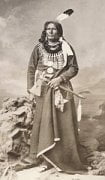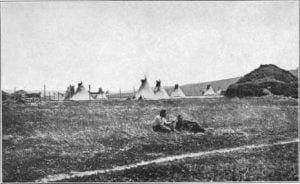Two Kettles Sioux Tribe
Two Kettle Indians, Two Kettle Lakota, Oohenonpa Tribe, Oohenonpa Indians, (‘two boilings’ ). A division of the Teton Sioux, commonly known as Two Kettle Sioux, or Two Kettles; also a subdivision thereof. No mention of it is made by Lewis and Clark, Long, or other earlier explorers. It is stated in a note to De Smet’s Letters (1843) that the band was estimated at 800 persons. Culbertson (1850) estimated them at 60 lodges, but gives no locality and says they have no divisions. Gen. Warren (1856) found them much scattered among other bands and numbering about 100 lodges. Gumming places … Read more





